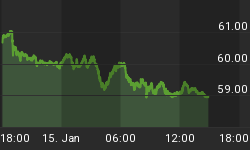Sometimes it is good to ponder.
Like now, when there are some large discrepancies that are very hard to explain. For instance, the huge differential between the indexes are something that investors should at least be aware of.
Take a look at the chart below and see what we mean ... here is the verbalexplanation of what it says:
"The indexes listed since the beginning of the year are shown on the chart. The most reasonable historical average to reflect on is 7.33% on the DJI during an election year. Now, that is an average, so to get an average, there has to be percentages above and below that percentage.
But, how much can one index vary from the DJI without being out of balance? I don't have the answer for that, so let's look at it logically and see what we get. For instance, the NDX is at 14% (year-to-date) and the DJI is at 5.47%, so the NDX is 256% beyond the yearly return of the DJI so far.
I would expect 100% to be out of balance, but 256% has to be an extreme where the NDX has gotten too far ahead of itself relative to the DJI. So what is the bottom line? It is, that given the chart showing the current relationships of different indexes (or ETF), that the skew is so extreme that it can (at best) be described as a mixed condition.
Election years often see money stimulation, but the market is also a great balancer of extremes. It may take time, but eventually the market will come back to normality and common sense.
Not a subscriber yet? Give it some thought and see some very valuable datathat you will never find anywhere else.

















